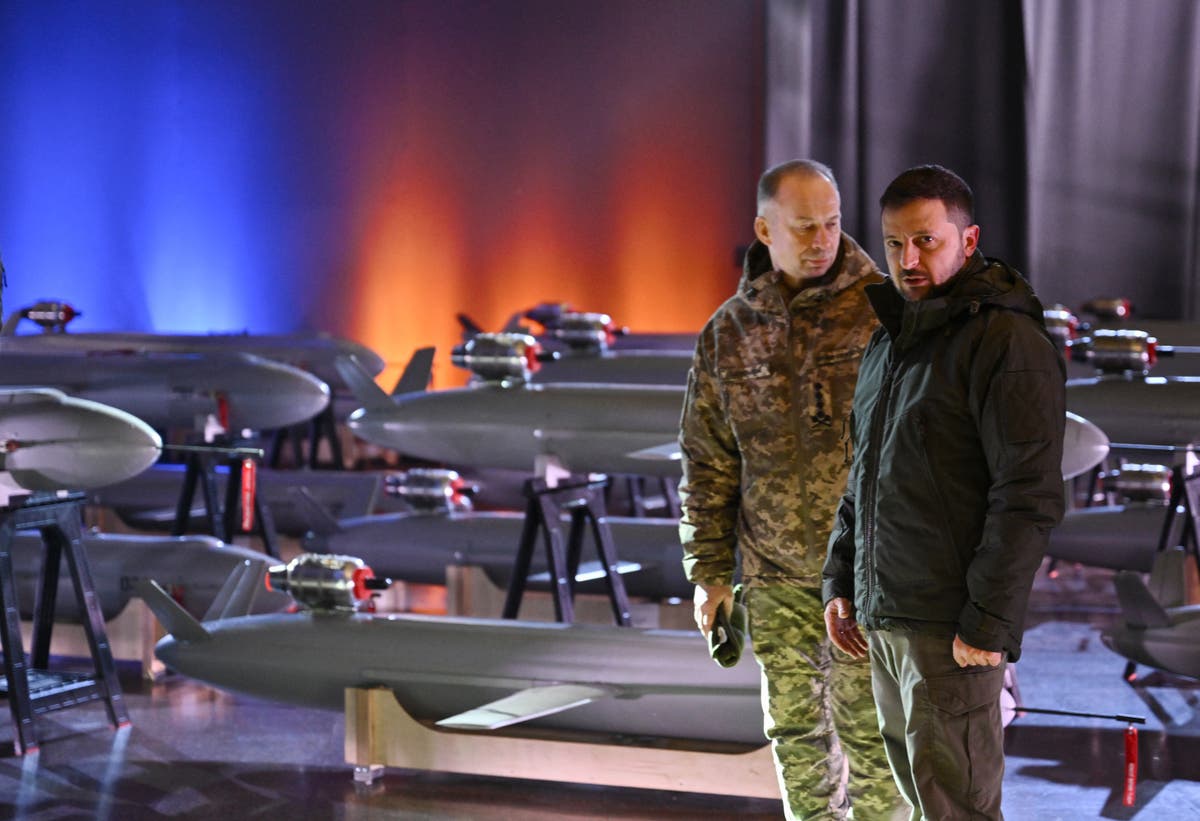
What will ‘referendums’ in occupied Ukraine regions look like?
Al JazeeraRussian-appointed officials say they are planning such processes, but observers say they will lack legitimacy. “They brought ‘film extras’ from other temporarily-occupied areas to Melitopol – 700 people – because they couldn’t even find that many among locals,” Fyodorov, who fled the city after it was occupied in early March, wrote on Telegram on Tuesday, using a term that has been a trademark of pro-Kremlin parties and politicians for decades. “Those were local self-defence forces,” Putin told a news conference in March 2014 – only to contradict himself a month later by admitting that the “little green men” were indeed Russian servicemen. Standing next to stern-looking men from “self-defence” units or separatist fighters, who did not say a word, the officials would also say things like, “We are going back to the motherland!”; or “The fascist regime in Kyiv is organising a genocide of Russian-speaking Ukrainians!”; or “Russia will protect your children from gay propaganda!”; or “Your salaries and pensions will be so much higher!” Most of the voters were elderly people who flocked the polling stations minutes after they opened at 8am. Andreas Umland, an analyst with the Stockholm Center for Eastern European Studies, told Al Jazeera the Kremlin today does not have “illusions that somebody outside Russia” would trust the result of such a process.
History of this topic

Is Russia plotting to divide Ukraine into 3 regions?
India TodayUkrainians living under Russian occupation are coerced to vote for Putin
Associated Press
Russia plans presidential vote in annexed Ukrainian regions
Al Jazeera
Local elections take place across Russia, but Ukraine is 'not on the agenda'
The IndependentRussia holds elections in occupied Ukrainian regions in an effort to tighten its grip there
Associated Press
Russia organizes elections in occupied Ukraine to tighten its grip
LA Times
Russia holds elections denounced by Kyiv in occupied Ukrainian regions
Al Jazeera
Russia’s Putin signs laws annexing occupied Ukrainian regions
Al Jazeera
Ukraine war updates: Russia retreats from a key city it just claimed to annex (Oct. 3)
NPR
Ukrainians dismiss Russian attempt to annex more of their country
Al Jazeera
‘Wait and See’: Jaishankar on India’s position on Russian referendums in occupied Ukrainian territory
The Hindu
Russia poised to annex occupied Ukraine after sham vote
Associated PressRussia prepares to annex parts of Ukraine after referendums reportedly endorse Moscow rule
ABC
EU slams Russia annexation ‘votes’ in four Ukraine regions
Al Jazeera
What Happens After Russia's 'Referendums' in Ukraine?
News 18
What happens after Russia’s ’referendums’ in Ukraine?
Live Mint
Russian forces have staged illegal ‘referendums’ in Ukraine. What comes next?
CNN
Ukraine war enters new phase as annexation votes draw to close
Al Jazeera
Occupied regions of Ukraine vote to join Russia in staged referendums
NPR
Ukrainians scared by Russia’s preordained referendums
Associated PressRussia is holding referendums to claim more parts of Ukraine. The West says they are illegal shams — here's why
ABC
Russia holds votes in 4 occupied regions of Ukraine, Kyiv says residents coerced
India Today
Russia holds breakaway polls in Ukraine
The Hindu
Unlawful Land Grab: Russia Holds Breakaway Referendum Polls in Four Regions of Ukraine
News 18
Russia’s annexation referendums start in occupied Ukraine, say agencies
The Hindu
4 Ukraine regions prepare to hold referendums to join Russia
India Today
Four occupied Ukraine regions begin vote on joining Russia
Al Jazeera
Will Moscow-held regions of Ukraine become part of Russia? Referendum begins
India TV News
Russia begins annexation vote, illegal under international law, in occupied Ukraine
NPR
EXPLAINER: What’s behind referendums in occupied Ukraine?
Associated Press
Zelenskyy vows Ukraine will win as Russia redoubles effort
Associated PressFour Ukrainian regions controlled by Russian-backed separatists request referendum to join Russia
ABC
4 Ukrainian regions schedule votes this week to join Russia
Associated Press
4 Ukrainian separatist regions plan votes to join Russia
The Hindu
Four Ukrainian separatist regions plan votes to join Russia
India TV News
Understanding Russia’s referendums in Ukraine
Al Jazeera
Russian-backed separatists in Ukraine plan annexation votes
Al Jazeera
Russia-Ukraine latest: Ukraine officially an EU candidate
Al Jazeera
‘Never going to happen’: Ukraine blasts trading land for peace
Al Jazeera
Occupied Ukrainian city fears sham Russian referendum plans
Associated Press
Occupied Ukrainian city fears sham Russian referendum plans
Associated Press
Russia plans a ‘Korean scenario’ for Ukraine: Intelligence chief
Al JazeeraDiscover Related









)








)

)


)





)






)



)